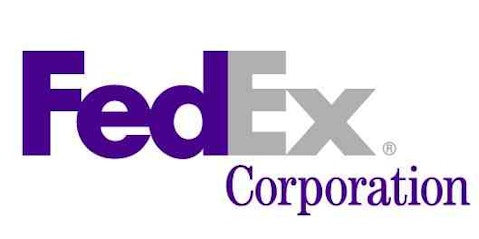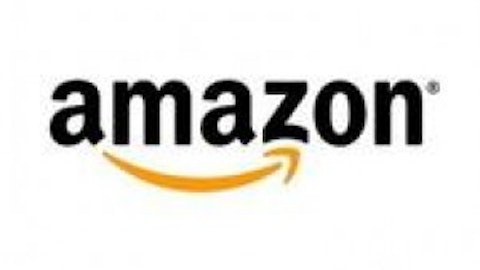E-commerce is a megatrend in full swing, and investors interested in the retail sector should be exploring ways to capitalize on it.
E-commerce sales were up by 15% in 2012, a year with overall U.S. GDP growth of 2.2%. In fact, year-over-year growth in online commerce has been in the double digits in each quarter since mid-2010, according to comScore. And that trend looks to be accelerating out of the recession.

Amazon also carries serious risk, as its stock price is untethered to its financial underpinnings. Amazon carries great potential, but investors must have an appetite for risk.
So, where else are investors to look for e-tail profits? Well, every purchase a customer makes at Amazon or another e-tailer must be delivered. And there are really just two publicly traded names in that game: United Parcel Service, Inc. (NYSE:UPS) and FedEx Corporation (NYSE:FDX).
Either one of these companies is worth consideration. But there is no clear winner between the two, and each faces its own set of headwinds moving into the future.
Sizing up Big Brown
UPS is the established leader in business-to-consumer shipping. Its iconic brown box trucks and uniformed drivers delivered more than 500 million packages during the holiday season. The company has a long history of solid management, as it continues to seek ways to improve its efficiency and expand margins.
You’ll see a sky-high price-to-earnings multiple for UPS. But that’s attributable to a major pension obligation of about $3 billion that the company had to meet last quarter. Excluding that charge, UPS earned $1.32 per share in the quarter, up over last year’s $.74. The company also saw revenue growth of near 3% year-over-year.
UPS expects
earnings growth of 6% to 12% in 2013, with EPS estimates of $4.80 to $5.06 per share. That would put its forward PE for 2013 somewhere between 16.5 and 17.4. Not bargain-rack prices, but certainly not expensive, given the company’s track record. What’s more, UPS says its fleet of aircraft and trucks is the newest in the industry, which means it plans for lower capital expenditures in the coming years than its competitors do.
UPS also delivers a nice dividend of a hair under 3%. Perhaps more importantly, it has a great history of raising that dividend. It’s up 161% since 2003. The only year UPS did not increase its dividend over that time was at the height of the economic crisis in 2008-2009.
But UPS is not without its worries. The company faces stiff competition from FedEx, which claims it has been taking market share from Big Brown. UPS is also a union shop, and there are concerns about contract negotiations with the Teamsters. (UPS says the two sides are “engaged in productive discussions.”) And there remain concerns about that pension, and what future obligations will do to the company’s bottom line.
A leaner, meaner FedEx?
As noted above, FedEx claims it has been taking market share from its larger rival. It says its holiday shipment volumes were up 13% over last year. Income from its ground shipments last quarter was up 4%, something it attributed to “strong revenue growth from e-commerce and market share gains.”
If it has been stealing market share from Big Brown, it hasn’t exactly been eating UPS’s lunch. Revenue at FedEx has grown at an annual average of about 6.7% since 2009. At UPS, that growth has come in at about 6.5%. On a dollar basis, UPS has still grown revenue faster.
FedEx does not have as strong a track record of good management as UPS. Return on equity is one metric investors can use to get some insight into how well a company is managed. In a nutshell, it shows how much profit a company is generating with the money that shareholders have invested.
Let’s take a quick look at how UPS and FedEx have delivered:

UPS Return on Equity data by YCharts
As you can see, FedEX has lagged its larger rival in this regard, and by no small margin. Although FedEx is the smaller company, it is not the more nimble of the two.
But the company has eyes on changing that. It has plans for a major reorganization starting this year. It sees this plan turning FedEx into a leaner, more nimble operator. It also expects the plan to pad profits by $1.7 billion over the next three years. But it will also have major upfront costs, mostly in the form of voluntary cash buyouts to workers in an effort to lower payroll. FedEx expects those expenses could hit $650 million. That could be a significant drag on earnings in the near term, even if it does position the company better for the future.
Stand on history, or bet on change
Neither of these package-delivery companies have the boundless e-tail growth potential of Amazon. But both present lower-risk opportunities to cash in on the growing e-tail trend. UPS brings a stronger track record of delivering return to investors, as well as a nice dividend. However, if FedEx is right, and the company continues to take market share, it could be the more compelling buy long term, especially if its planned reorganization creates the efficiencies the company hopes it will.
The article Can These Companies Deliver E-Tail Profits? originally appeared on Fool.com and is written by John-Erik Koslosky.
Copyright © 1995 – 2013 The Motley Fool, LLC. All rights reserved. The Motley Fool has a disclosure policy.





